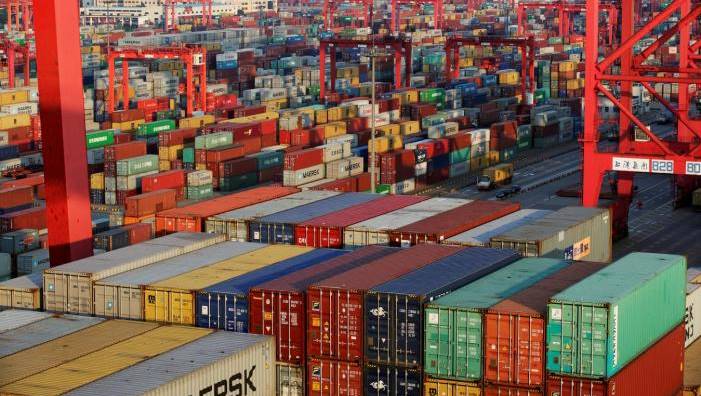Pakistan’s trade deficit has dropped by 34 percent to $9.38 billion in the first five months of Fiscal Year 2024, mainly due to significant drop in imports.
Significant decrease in trade deficit in recent times eased pressure on the country’s depleting foreign exchange reserves, which remained under struggle despite inflows from the International Monetary Fund (IMF) and friendly nations.
Data shared by Pakistan Bureau of Statistics (PBS) revealed that Pakistan’s trade balance was recorded at $14.28 billion last year in same period, and now it stand at $9.38 billion in July to November period.
During this period, Pakistan took stringent measures and thus imports declined whereas exports saw a marginal increase.
In last five months, the exports of crisis hit nation saw an upward trend of 1.93pc to $12.17 billion from $11.94 billion in the corresponding period of FY23. Numbers revealed that exports improved by 7.66pc to $2.57 billion in November 2023 while it stood at $2.39 billion in same month of previous year.
Imports also moved down by 17.3pc to $21.55 billion in July to November period, down from $26.06 billion in the same period of FY22.
On a monthly basis, the trade deficit shrank by over 13 percent, as compared to $2.17 billion in October 2023.
The country’s exports narrowed by 4.4pc to $2.57 billion in last month from $2.69 billion in the preceding month of October.
Imports on the other hand have reduced by 8.3pc to $4.46 billion from $4.86 billion in last month.
Trade deficit occurs when a country’s imports exceed its exports during a specific period. It’s an economic indicator that reflects the imbalance between a nation’s consumption and production.
For our readers’ information, trade deficit doesn’t necessarily indicate a negative economic situation, as it can be influenced by various factors such as economic growth, consumer preferences, and government policies.









